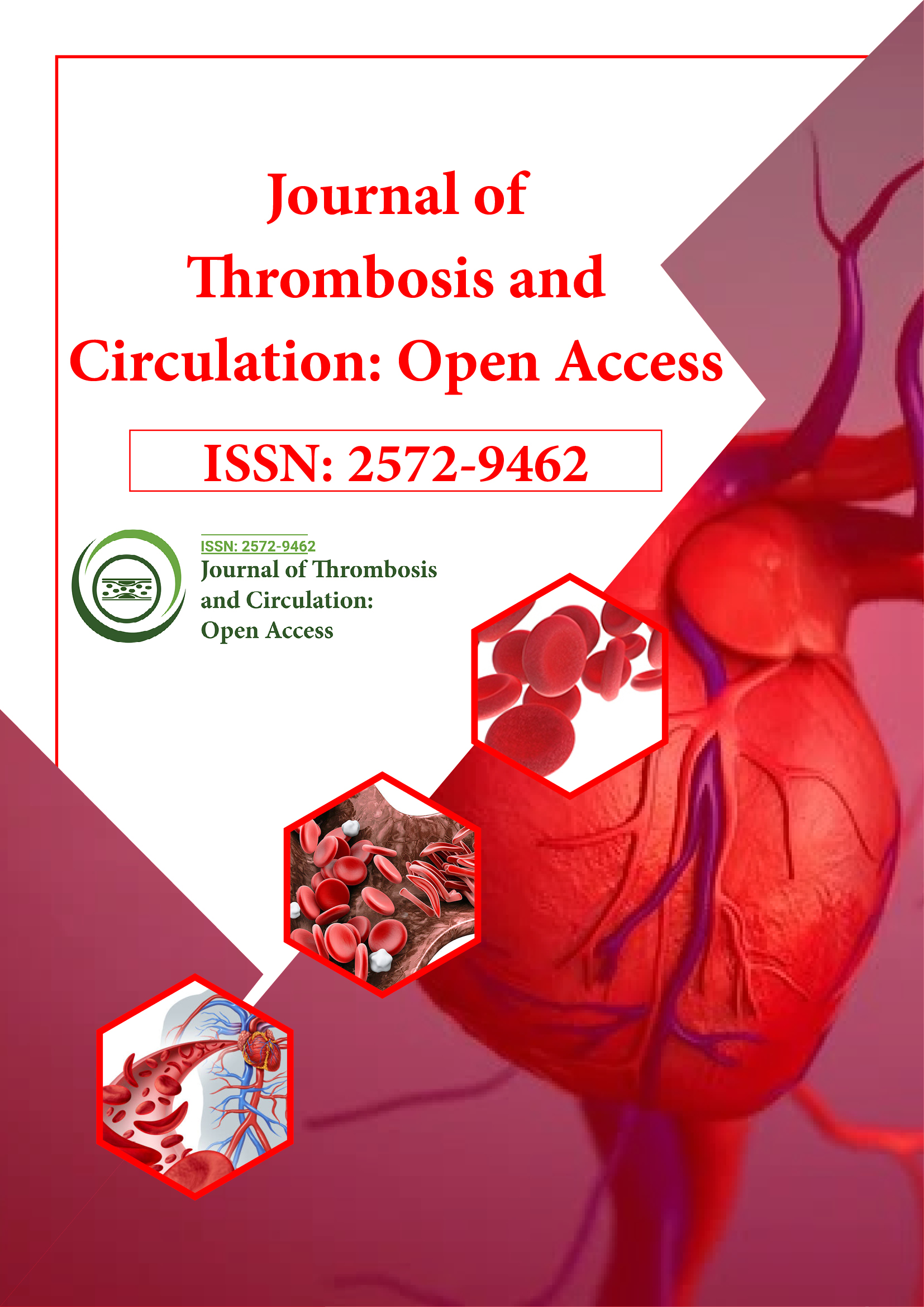Indexed In
- RefSeek
- Hamdard University
- EBSCO A-Z
- Publons
- Google Scholar
Useful Links
Share This Page
Journal Flyer

Open Access Journals
- Agri and Aquaculture
- Biochemistry
- Bioinformatics & Systems Biology
- Business & Management
- Chemistry
- Clinical Sciences
- Engineering
- Food & Nutrition
- General Science
- Genetics & Molecular Biology
- Immunology & Microbiology
- Medical Sciences
- Neuroscience & Psychology
- Nursing & Health Care
- Pharmaceutical Sciences
Commentary Article - (2025) Volume 11, Issue 2
Thromboinflammatory Pathways in COVID-19: A Persistent Risk for Circulatory Complications
Priya Menon*Received: 30-May-2025, Manuscript No. JTCOA-25-29336; Editor assigned: 02-Jun-2025, Pre QC No. JTCOA-25-29336 (PQ); Reviewed: 16-Jun-2025, QC No. JTCOA-25-29336; Revised: 23-Jun-2025, Manuscript No. JTCOA-25-29336 (R); Published: 30-Jun-2025, DOI: 10.35248/2572-9462.25.16.301
Description
The COVID-19 pandemic has not only disrupted global healthcare systems but has also revealed unexpected vascular consequences associated with the disease. Beyond its pulmonary manifestations, SARS-CoV-2 has demonstrated a pronounced propensity to affect the coagulation system, leading to both venous and arterial thrombosis. Numerous studies now support the concept of COVID-19 as a thromboinflammatory disease, with circulatory complications arising even in asymptomatic or mildly symptomatic individuals. The sustained risk of thrombosis in convalescent patients further emphasizes the need to reevaluate post-COVID vascular surveillance strategies.
One of the most significant hematologic findings in COVID-19 patients is the presence of elevated D-dimer levels, often predictive of poor prognosis and mortality. The mechanisms underlying this hypercoagulable state involve a complex interplay between viral endothelial invasion, cytokine storm, complement activation and hypoxia-induced thrombosis. SARS-CoV-2 targets endothelial cells via ACE2 receptors, leading to endothelialitis, which is followed by disruption of vascular integrity, platelet aggregation, and subsequent thrombus formation.
Neutrophil Extracellular Traps (NETs) also play a vital role in this thromboinflammatory process. Released by activated neutrophils in response to infection, NETs promote platelet activation and fibrin deposition. Autopsies of COVID-19 patients have revealed widespread microvascular thrombi in multiple organs, highlighting the systemic nature of thrombotic complications. Pulmonary embolism, deep vein thrombosis, stroke and myocardial infarction have all been reported with increased frequency in hospitalized COVID-19 patients, even in those receiving prophylactic anticoagulation.
Furthermore, the incidence of thrombotic events in nonhospitalized patients is now being appreciated. Case reports and registry data have documented delayed vascular events occurring weeks after apparent recovery from COVID-19, raising concerns about persistent endothelial dysfunction and subclinical inflammation. The term “post-COVID coagulopathy” is emerging to describe this poorly understood phenomenon. This condition may share mechanistic similarities with antiphospholipid syndrome, given the detection of transient antiphospholipid antibodies in some patients.
Current treatment guidelines recommend thromboprophylaxis in hospitalized COVID-19 patients, particularly those requiring intensive care. However, there is ongoing debate regarding the intensity and duration of anticoagulation in outpatients and post-discharge scenarios. Several trials are underway to compare the efficacy of full-dose anticoagulation versus standard prophylaxis in different clinical settings. The use of Direct Oral Anticoagulants (DOACs) has been explored, although the risk of bleeding must be balanced against thrombotic prevention.
The impact of vaccination on COVID-associated thrombosis has also drawn attention. While adenoviral vector vaccines have been associated with rare cases of Vaccine-induced Immune Thrombotic Thrombocytopenia (VITT), mRNA vaccines have not shown significant prothrombotic tendencies. Nonetheless, distinguishing between vaccine-related and infection-related thrombosis remains critical in risk stratification.
Long COVID or Post-Acute Sequelae of SARS-CoV-2 infection (PASC) includes symptoms of fatigue, chest pain and palpitations, which may be related to microvascular injury and autonomic dysregulation. The possibility that unresolved microthrombi contribute to these symptoms is currently under investigation. As such, identifying reliable biomarkers of persistent endothelial activation and coagulation abnormalities may guide therapeutic decisions.
The long-term cardiovascular burden of COVID-19 is expected to be substantial. Even in young and previously healthy individuals, SARS-CoV-2 may trigger subclinical vascular changes with unclear implications. Surveillance strategies, particularly in high-risk groups such as the elderly, diabetics and those with prior thrombotic history, must evolve to include regular vascular assessments and biomarker screening. Incorporating duplex ultrasonography and cardiac imaging in post-COVID clinics could aid in early detection of lingering circulatory issues.
As we move into the endemic phase of COVID-19, a paradigm shift is necessary in managing the vascular sequelae of the disease. Multidisciplinary care involving hematologists, cardiologist and primary care physicians will be essential in formulating individualized plans for risk assessment and thromboprophylaxis. Research into targeted anti-inflammatory and endothelial-protective therapies may provide new avenues for reducing thrombotic complications.
In summary, COVID-19 has unveiled the intimate connections between infection, inflammation and thrombosis. Recognizing and addressing the thromboinflammatory nature of the disease is key to preventing long-term circulatory complications. Continued vigilance and research are imperative to mitigate the vascular risks associated with both acute and post-acute COVID-19 syndromes.
Citation: Menon P (2025). Thromboinflammatory Pathways in COVID-19: A Persistent Risk for Circulatory Complications. J Thrombo Cir. 10:301.
Copyright: © 2025 Menon P. This is an open-access article distributed under the terms of the Creative Commons Attribution License, which permits unrestricted use, distribution, and reproduction in any medium, provided the original author and source are credited.
